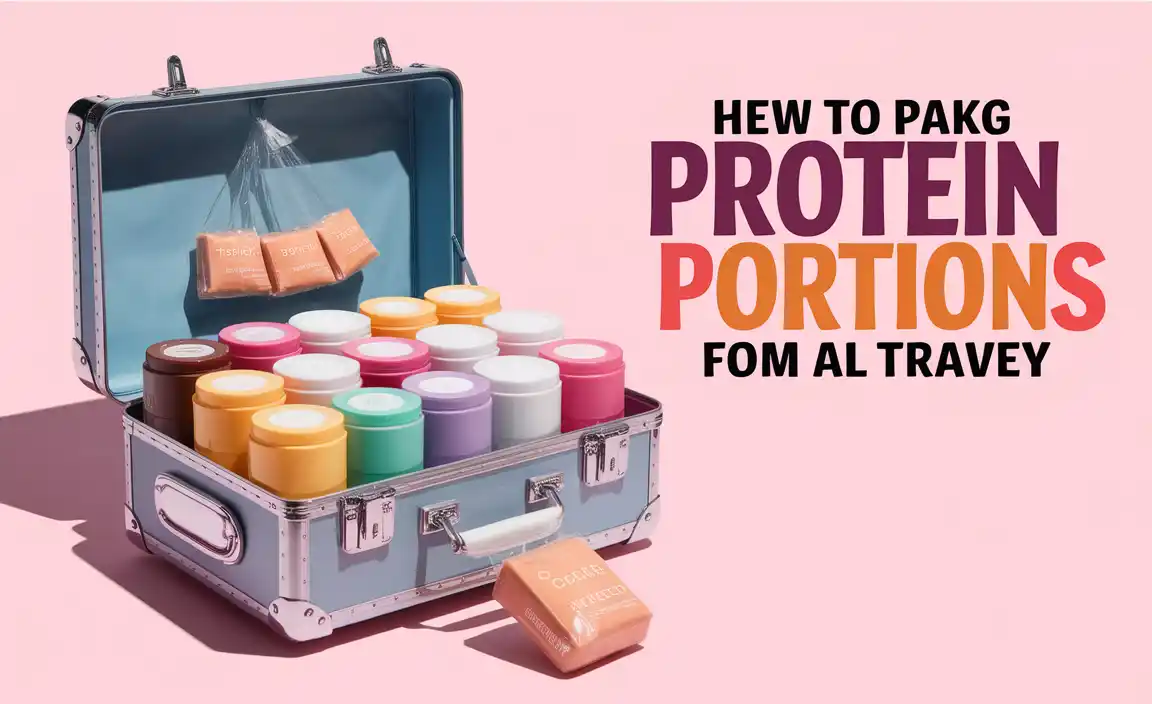While Bogota is an incredible city, knowing which areas to approach with extra caution is key for a safe and enjoyable trip. This guide focuses on practical advice to help you navigate the city confidently, highlighting specific neighborhoods and offering tips for a secure experience.
Welcome to Bogota! It’s a vibrant capital city brimming with culture, history, and incredible food. Like any major metropolis, it has its safer spots and areas where you’ll want to be more aware of your surroundings.
Planning ahead is the best way to ensure your adventure is filled with amazing memories, not worries. We’re here to break down some of the areas that require a bit more caution, offering simple, actionable tips so you can explore Bogota with peace of mind. Let’s make your journey smooth and secure!
Understanding Bogota Safety: A Balanced Perspective
Bogota is a sprawling city, and safety can vary significantly from one neighborhood to another. While general crime statistics might seem daunting, they often don’t tell the whole story. The most common concerns for visitors tend to be petty crime like pickpocketing and bag snatching, especially in crowded areas or tourist hotspots. More serious crimes are generally less common in tourist zones but do occur. The key is awareness and preparation.
It’s important not to let the potential for crime deter you from experiencing Bogota’s charm. Millions of tourists visit each year without incident. By understanding which areas might present higher risks and by implementing basic safety precautions, you can significantly reduce your chances of encountering trouble. This guide is designed to give you that understanding so you can travel smarter and enjoy all that Bogota has to offer.
Areas Requiring Extra Caution in Bogota
While Bogota is constantly evolving, some neighborhoods have historically presented higher safety risks for visitors. This isn’t to say these areas are entirely off-limits, but rather that extra vigilance and specific precautions are recommended if your itinerary takes you there.
Downtown Bogota (La Candelaria and Surroundings)
La Candelaria is Bogota’s historic heart, and it’s a must-visit for most tourists. You’ll find stunning colonial architecture, vibrant street art, museums, and bustling plazas. However, precisely because it attracts so many visitors, it also attracts opportunistic thieves.
- What to watch out for: Pickpocketing, especially in crowded plazas like Plaza Bolívar and on busy pedestrian streets. Bag snatching can occur, particularly from unsuspecting tourists who leave bags unattended or display valuables.
- When to be extra careful: Late at night, especially on less crowded side streets.
- Advice: Stick to well-lit and populated areas, keep valuables secure and out of sight, be aware of your surroundings, and avoid walking alone late at night. Consider using reputable taxis or ride-sharing services if returning to your accommodation after dark.
South Bogota (Districts like Santa Fe and Puente Aranda)
These districts, particularly areas south of the immediate downtown core, can be less developed and have a higher crime rate. While they may contain commercial or industrial zones, they are generally not tourist destinations and often lack the visible presence of tourist police.
- What to watch out for: Increased risk of petty theft. Some areas might also have a higher prevalence of drug activity or homelessness, which can sometimes correlate with opportunistic crime.
- When to be extra careful: Anytime, especially if you find yourself there unintentionally.
- Advice: It’s generally advisable for tourists to avoid venturing into these areas unless accompanied by a local or for a very specific, pre-arranged purpose. If you must pass through, remain in your vehicle, keep doors locked, and windows up.
Chircales (Informal Settlements) and Certain Outskirts
Like in many large cities, informal settlements on the fringes of Bogota can be areas with limited infrastructure and higher socio-economic challenges, which can sometimes contribute to higher crime rates. These are generally far from tourist trails.
- What to watch out for: Higher risk of various types of crime.
- When to be extra careful: Anytime.
- Advice: Tourists should avoid these areas altogether. They are not tourist destinations and offer no attractions for visitors. Focusing your exploration on established neighborhoods is the safest approach.
Certain Transit Zones
While the main TransMilenio stations are generally patrolled, the areas immediately surrounding major bus terminals or less-frequented TransMilenio stops, especially at off-peak hours, can be targets for petty crime.
- What to watch out for: Pickpocketing, snatch-and-grabs, and sometimes scams.
- When to be extra careful: Early mornings, late nights, and during busy rush hours when you might be distracted by crowds.
- Advice: Be extra vigilant when using public transport. Keep your belongings close, especially your phone and wallet. Avoid displaying expensive items and be wary of strangers who seem overly eager to help or distract you. Use official taxis or ride-sharing services for late-night travel.
Safer Areas & Neighborhood Highlights
The good news is that Bogota has many wonderful and safe neighborhoods perfect for exploring. These areas are generally well-patrolled and have a more relaxed atmosphere for visitors.
Zona Rosa and Zona T (Chapinero Area)
These adjacent zones in the north of the city are Bogota’s modern entertainment and commercial hubs. They are known for their upscale restaurants, trendy bars, boutique shops, and vibrant nightlife. They are generally considered very safe for visitors.
- Why visit: Excellent dining, shopping, and nightlife.
- Safety: High police presence, well-lit, and busy with people, making them generally safe.
- Tips for travelers: Enjoy the lively atmosphere, but still practice common sense – keep valuables secure, especially when out late.
Usaquén
A charming former town now integrated into Bogota, Usaquén retains its colonial character with cobblestone streets, a beautiful main square, and an acclaimed Sunday flea market. It’s a popular spot for locals and tourists alike.
- Why visit: Historic charm, Sunday market, excellent restaurants, picturesque setting.
- Safety: Very safe, with a pleasant atmosphere. The flea market can get crowded, so be mindful of belongings during peak hours.
- Tips for travelers: Explore the market, enjoy a leisurely brunch, and soak in the unique ambiance. Be aware of your surroundings in the market crowd.
El Nogal, El Retiro, and Chicó Alto (Northern Bogota)
These are affluent residential and business districts in the north of Bogota. You’ll find modern shopping malls, high-end hotels, corporate offices, and pleasant residential areas. They are considered some of the safest parts of the city.
- Why visit: Upscale shopping, modern amenities, pleasant parks, and a clean environment.
- Safety: Considered among the safest areas in Bogota, with good infrastructure and a noticeable police presence.
- Tips for travelers: Ideal for those looking for comfortable accommodation and a more predictable environment.
Zona G (Gastronomic Neighborhood)
Located within the Chapinero area, Zona G is renowned for its concentration of Bogota’s finest restaurants. It’s a destination for food lovers and offers a sophisticated dining experience.
- Why visit: Culinary hotspot with diverse gourmet options.
- Safety: Generally safe, especially during dining hours, due to the constant stream of patrons and the area’s upscale nature.
- Tips for travelers: Book in advance for popular restaurants. Enjoy a wonderful meal, and be mindful of your belongings as you would in any dining establishment.
General Safety Tips for Bogota
Beyond understanding specific neighborhood risks, adopting general safety practices will benefit you throughout your trip. These are universal travel tips, but especially important in a large city like Bogota.
1. Be Aware of Your Surroundings (Situational Awareness)
This is the golden rule of travel safety. Pay attention to who and what is around you, especially in crowded places or when feeling uneasy. Trust your instincts; if a situation feels off, remove yourself from it.
2. Secure Your Valuables
Use a money belt or a secure inner pocket for your passport, extra cash, and important cards. Keep only necessary cash and one card on you for daily use. Avoid displaying expensive jewelry, cameras, or phones unnecessarily.
3. Use Reputable Transportation
For airport transfers and late-night travel, always use official airport taxis, pre-booked services, or ride-sharing apps like Uber or Didi that operate within Colombia. Avoid hailing random taxis on the street, especially late at night or in deserted areas. Check Colombia’s Ministry of Transport for guidelines on official taxi services.
4. Be Cautious with Your Phone
Phones are prime targets for theft. Don’t walk while staring at your phone, especially in busy areas or when crossing streets. If you need to use your phone for navigation, find a safe spot (like inside a shop) to do so, or have a travel companion keep an eye out.
5. Avoid Displaying Large Amounts of Cash
When paying for anything, be discreet. Try to use smaller bills and avoid pulling out a large wad of cash. ATMs are readily available, but it’s best to use them inside banks or in well-lit, secure locations.
6. Stay Connected
Keep your phone charged. Consider getting a local SIM card for better rates and connectivity for navigation and communication. Share your itinerary with someone back home and check in regularly.
7. Learn Basic Spanish Phrases
Knowing a few basic phrases can go a long way in navigating situations, asking for help, and showing respect for the local culture. It can also help you avoid scams if you can understand and respond.
8. Be Wary of Distraction Tactics
Thieves sometimes work in teams. One person might spill something on you, ask for directions, or create a commotion to distract you while another commits the theft. Stay alert to these common scams.
9. Travel Insurance is Essential
Ensure you have comprehensive travel insurance that covers theft, medical emergencies, and trip interruptions. This provides a crucial safety net should anything unexpected happen.
10. Research Your Accommodation
Choose hotels or rentals in well-regarded neighborhoods. Read reviews to get a sense of the area’s safety and the accommodations’ security measures.
Traveling with Children and Adult Diapers in Bogota
For families traveling with young children or adults who require diaper support, Bogota offers accessible options. Planning for comfort and convenience, especially on long travel days or during extensive sightseeing, is paramount. Bringing an adequate supply of child or adult diapers from home is often the easiest solution, ensuring you have your preferred brand and fit. However, if you need to purchase them in Bogota, you can find them in:
- Large Supermarkets: Stores like Éxito, Jumbo, and Olímpica have extensive health and beauty sections that include a wide variety of diapers for children and adults.
- Pharmacies (Droguerías): Pharmacies are abundant throughout the city and typically stock a good selection of incontinence products and baby diapers.
- Department Stores: Larger department stores might also carry these items.
Comfort is key, so if you rely on specific brands for yourself or your children, packing them is often recommended. However, for peace of mind knowing solutions are available locally, these retail points are reliable.
Safety vs. Opportunity: Balancing Risk
It’s crucial to remember that Bogota is a city of immense opportunity and vibrant life. The areas to “avoid” or be cautious in are often those with fewer tourist amenities or those where opportunistic crime is statistically higher. This doesn’t mean they are entirely dangerous, but rather that engaging with them requires a higher level of preparation and awareness.
The vast majority of your time in Bogota will likely be spent in safe, enjoyable neighborhoods. By following the safety tips and understanding the nuances of different districts, you can confidently explore Bogota’s rich culture, stunning landscapes, and warm hospitality. Your focus should be on soaking in the experiences, from the historic streets of La Candelaria (with due caution) to the lively dining scene of Zona G.
Conclusion
Bogota is a city that rewards the prepared traveler. By understanding which areas require a bit more attention and by implementing practical safety measures, you are well on your way to a fantastic experience. From the vibrant street art of La Candelaria to the culinary delights of Zona G, Bogota has so much to offer. Remember, being aware of your surroundings, securing your belongings, and using reliable transportation are your best allies.
This guide aims to provide you with the knowledge to navigate Bogota confidently, allowing the city’s rich culture, warm people, and stunning landscapes to take center stage in your travel memories. Pack your bags, embrace the adventure, and explore Bogota with peace of mind. Your journey essentials include not just comfortable shoes and a curious spirit, but also this essential safety knowledge.
FAQs
What is the general crime rate like in Bogota?
Bogota, like any large capital city, experiences crime. Petty theft such as pickpocketing and bag snatching is the most common concern for tourists, especially in crowded areas. Violent crime is less common in tourist zones but does occur. Adhering to safety advice significantly mitigates risks.
Is it safe to use public transportation (TransMilenio) in Bogota?
The TransMilenio system can be efficient and cost-effective. However, it can get very crowded, especially during rush hours, making it a prime location for pickpocketing. Be vigilant, keep your belongings secure, and be aware of your surroundings. Avoid using it late at night if possible; opt for reputable taxis or ride-sharing apps instead.
Should I worry about being kidnapped in Bogota?
Kidnapping, especially of tourists, is extremely rare in Bogota. This is typically a concern associated with specific, high-risk areas or individuals involved in criminal activities, not the average visitor. Focus on petty theft awareness rather than this unlikely scenario.
Is it safe to walk around Bogota at night?
It’s generally recommended to avoid walking alone at night, especially in less populated or unfamiliar areas. Stick to well-lit, busy streets in popular neighborhoods like Zona Rosa or Usaquén, or use reputable taxis/ride-sharing services to return to your accommodation.
What safety precautions should I take when visiting La Candelaria?
La Candelaria is Bogota’s historic center and a major tourist draw. While generally safe during the day, its popularity makes it a target for pickpockets. Stay aware of your belongings, avoid displaying valuables, and be cautious of your surroundings, especially in crowded plazas or during less busy hours.
Are ride-sharing apps like Uber safe in Bogota?
Ride-sharing apps like Uber, Didi, and Cabify are widely used in Bogota and are generally a safe and convenient option. They offer the benefits of tracking your journey and knowing your driver’s details. Always verify the car and driver match the app information before getting in.
How can I avoid common tourist scams in Bogota?
Be wary of overly friendly strangers offering unsolicited help, especially if it involves getting you to a specific shop or service. Avoid distraction tactics like someone spilling liquid on you or creating a fuss. If something seems too good to be true, it probably is. Do your research on common tourist scams specific to Bogota.





